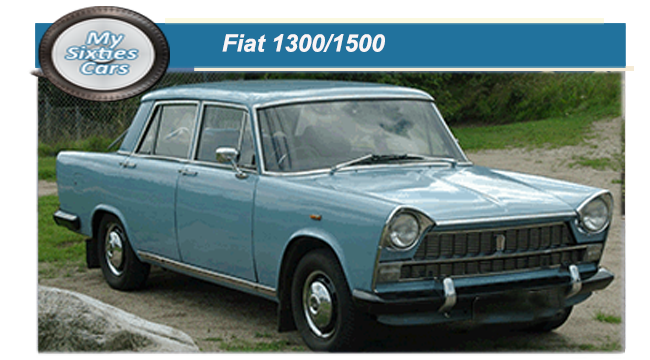
The Fiat 1300 and 1500 models were introduced in 1961 to replace the rapidly dating and chronically underpowered 1200 and 1400 series.
Both models were available as either a saloon, coupé, station and cabriolet.
T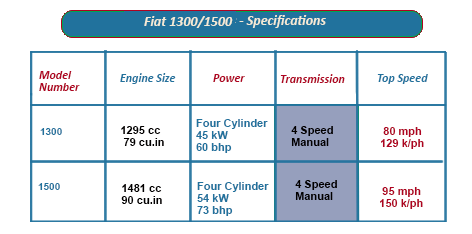 he 1300 and 1500 design were the fruit of Fiat’s long-running relationship with Turin design workshop Pininfarina.
he 1300 and 1500 design were the fruit of Fiat’s long-running relationship with Turin design workshop Pininfarina.
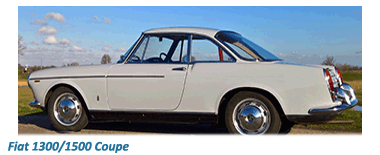 Although there were some minor design modifications between the models, the common denominators were the car’s low-lying bonnet sitting astride a very broad grille manufactured using a distinctive pattern reminiscent of the egg crates that were predominant in Italian car design of the Sixties.
Although there were some minor design modifications between the models, the common denominators were the car’s low-lying bonnet sitting astride a very broad grille manufactured using a distinctive pattern reminiscent of the egg crates that were predominant in Italian car design of the Sixties.
To identify the model’s origin, as there were a number of spins offs around especially with the saloon, a Fiat insignia was placed prominently in the centre of the bonnet.
Particularly distinctive in a vehicle that stood out from the crowd because it was so nondescript , were its twin headlights that sat upon a front bumper that neatly wrapped around the car’s front end.
![]()
Technically the Fiat 1300 and 1500s were utterly conventional in design, powered by front-mounted engines that sent power to the rear axle.
The 1300 and 1500 engines were two identical variations of the same layout, with the core difference being in the depth of the bore.
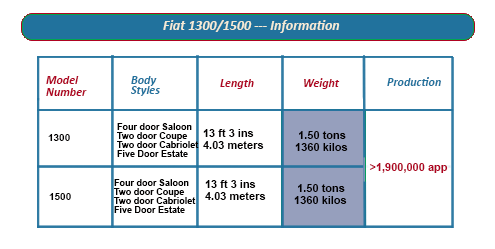 Either engine was linked to a four-speed manual transmission with the gear lever placed on the column which gave the car a sporty feel, especially in the cabriolet and coupe versions.
Either engine was linked to a four-speed manual transmission with the gear lever placed on the column which gave the car a sporty feel, especially in the cabriolet and coupe versions.
An innovative feature divulged at the time of the launch was disc brakes fitted on the car’s front,
In 1964 Fiat began to offer the 1300 and 1500 fitted with a five-speed unit manual transmission as standard.
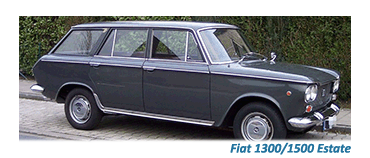
Some other minor detail differences were made to both models, including power brakes and larger taillights with integral reverse lamps.
These updates combined were sufficient to allow Fiat to launch a new model - the 1500D (diesel).
![]()
Virtually identical except for their engine size and power, the 1300 and 1500 remained in production for a short time, with sales for such a wide variety of options stilldisappointing.
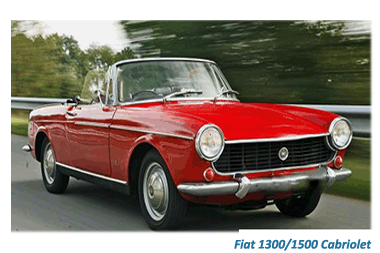 Fiat were well aware that, at least, mechanically the Fiat 1300 and 1500 were technically advanced meaning that what hampered sales was their slightly bland and dated appearance.
Fiat were well aware that, at least, mechanically the Fiat 1300 and 1500 were technically advanced meaning that what hampered sales was their slightly bland and dated appearance.
Realising that demand for the duo would never take off, the two models were simultaneously discontinued in 1967, replaced by the Fiat 124 and 125 series.




